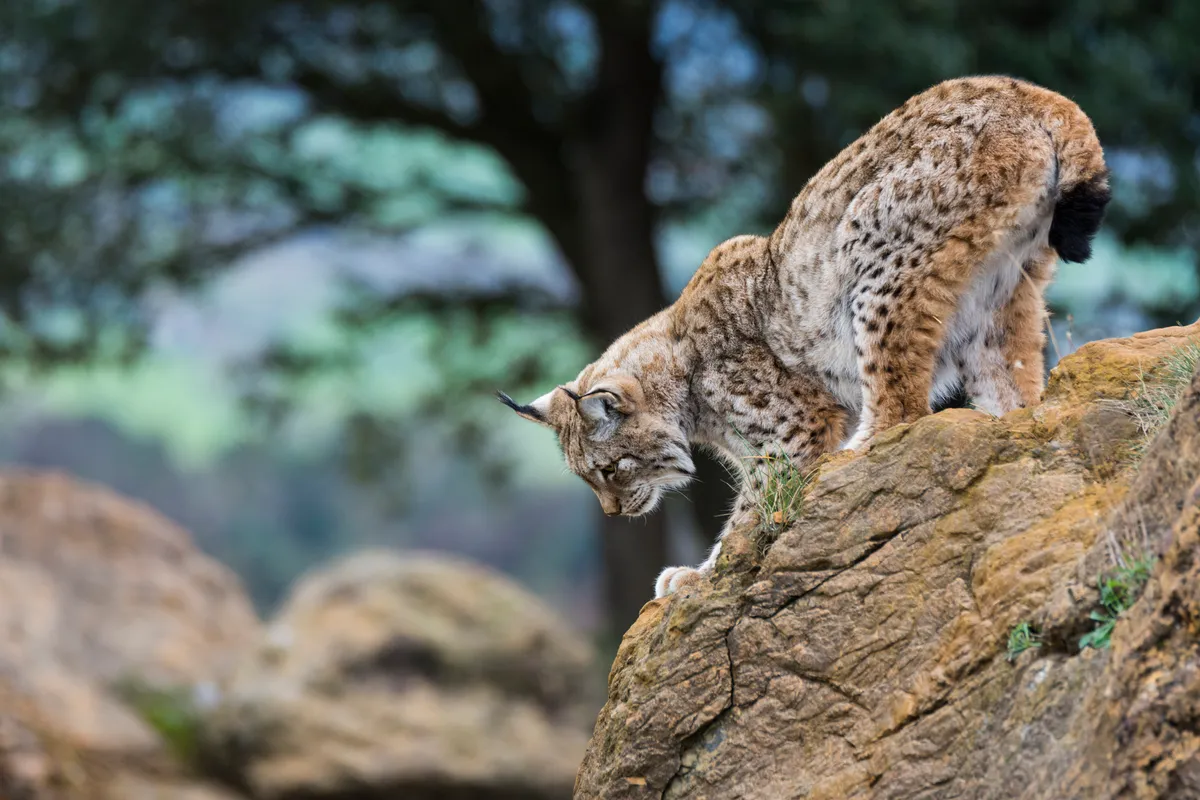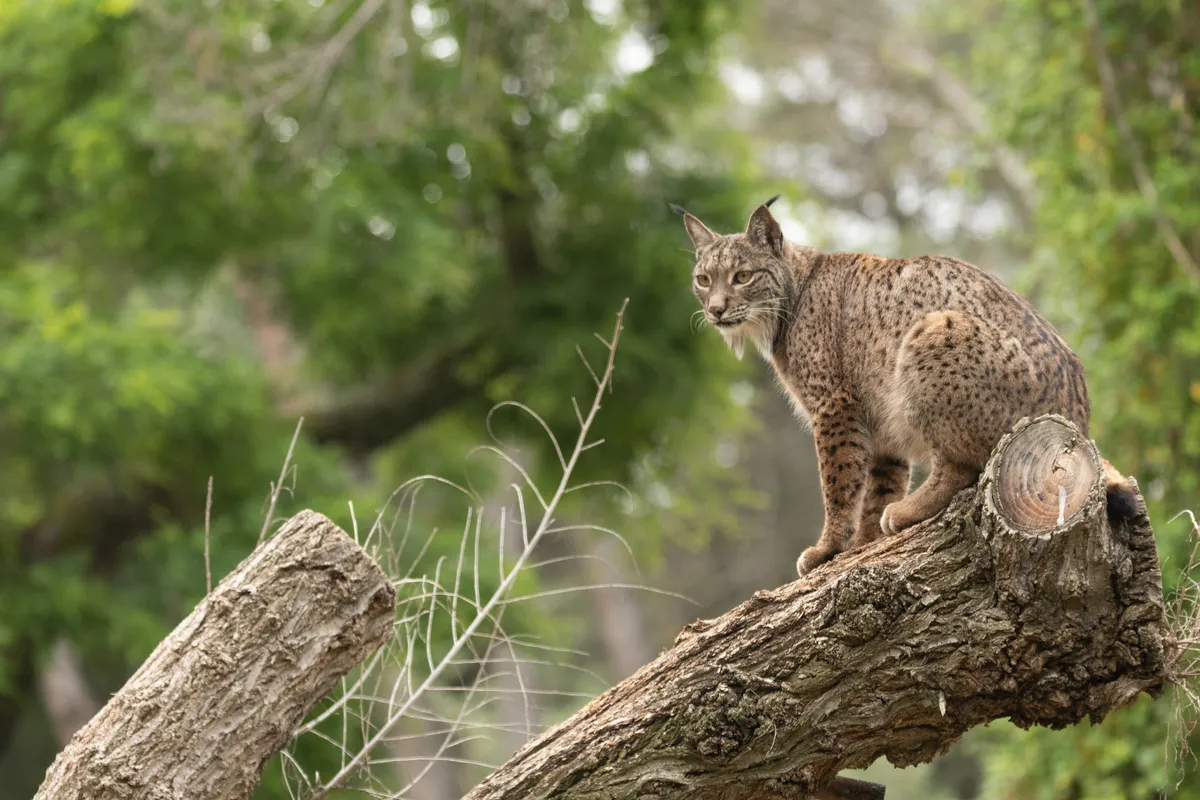Where does the name lynx come from?
'Lynx' is believed to have derived from the Greek leukos, meaning 'light' or 'bright'. The name refers to the reflective layer of the lynx’s eyes, a structure known as the tapetum lucidum.
How many species of lynx are there?
There are four extant (living) species of lynx:
- Iberian, Lynx pardinus
- Canadian, L. canadensis
- Eurasian, L. lynx
- Bobcat, L. rufus
The Iberian lynx was originally considered to be the same species as the Eurasian lynx, however, morphology and genetics identified it as its own species.
All four species are part of the Felidae (cat) family, which is split into two subfamilies: Pantherinae (2 extant genera, 7 extant species) and Felinae (13 extant genera, over 30 extant species).
Where is the Iberian lynx found?
The habitat of the Iberian lynx is high altitude shrubland. As the name suggests, the Iberian lynx was once widespread across the Iberian Peninsula: namely Spain and Portugal.
Since the 1940’s, the population of Iberian lynx has drastically declined to just two subpopulations in Andalusia, south west Spain.
A series of reintroductions to Andalusia and Portugal have increased the number of Iberian lynx across its historic range.
What do Iberian lynx look like?
The Iberian lynx has a tawny coat with dark spots, long legs, a short tail, and tufts of hair at the end of its ears that is characteristic of lynx species. It has a distinctive 'beard' around its face and weighs roughly half the size of the largest lynx species: the Eurasian lynx. Iberian lynx males weigh, approximately, 13kg and females 10kg.

Why do lynx have tufts on their ears?
No one is definitively sure what the function of a lynx’s ear tufts are. Some scientists believe that the tufts acts like whiskers, allowing for the detection of movements and the surrounding environment. Others believe that the tufts enhance a lynx’s hearing.
What do Iberian lynx eat?
The Iberian lynx preys almost exclusively on European rabbit, supplementing this diet with ducks, young deer, and partridges if required. Like other cats, lynx stalk and ambush their prey.
Is the Iberian lynx endangered?
The Iberian lynx is listed as Endangered on the IUCN Red list (last assessed 2014). With the number of mature individuals estimated at 156, the Iberian lynx is one of the most endangered cat species in the world.
The Canadian and Eurasian lynx, and the bobcat are all listed as Least Concern.
What are the threats to the Iberian lynx?
Increasing encroachment by humans into lynx habitat, including the intensification of agriculture, has resulted in habitat loss, fragmentation, and degradation. The Iberian lynx are also at risk of being hit by cars.

Prey availability significantly impacts upon lynx survival and breeding success. The Iberian lynx population declined in the 20th century due to outbreaks of myxomatosis and rabbit haemorrhagic disease that caused sharp declines in rabbit populations.
Other threats include illegal hunting, diseases passed to lynx from domestic and feral cats, and poor genetic diversity from small population sizes.
When do Iberian lynx breed?
Iberian lynx reach sexual maturity at one year old, although females will only mate once they have secured a territory.
Typically, the mating season occurs between January and March.
After a two-month gestation period, females will give birth to two or three kittens.
Can lynx purr?
Yes – just like domestic cats, cheetahs, and cougars, lynx have a rigid set of delicate bones (called hyoid bones) that supports the larynx and the tongue. The vibration of the larynx causes the hyoid bones to vibrate to produce a purr.
In big cats, tough cartilage runs up the hyoid bones to the skull, giving the larynx enough flexibility to produce a roar, but not a purr.
Main image: close up of an Iberian lynx. © Cris Cantón/Getty Images